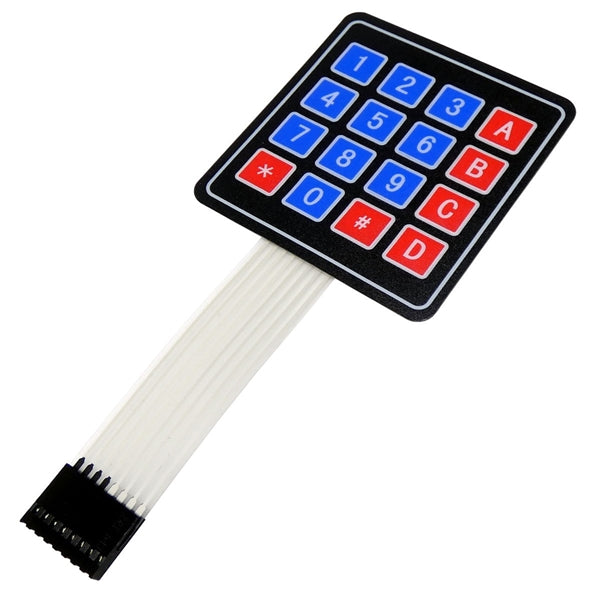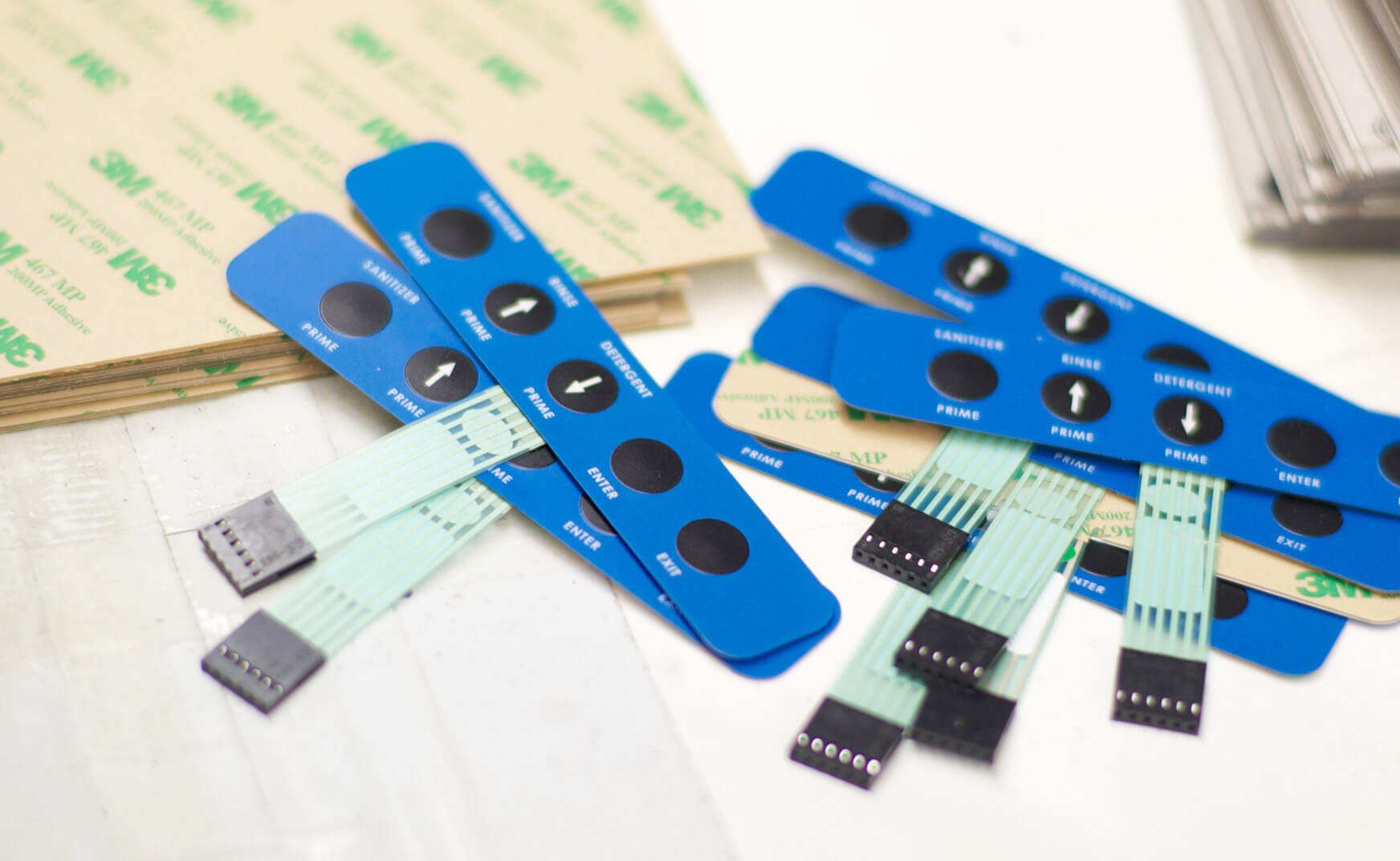Choosing the right membrane switch manufacturer can positively impact your product's performance.
All Concerning Membrane Layer Switch: Recognizing Its Style and Functionality
When you think about the control user interfaces in contemporary gadgets, membrane layer switches commonly come to mind. Allow's explore what sets membrane layer switches over apart from other control systems.
What Are Membrane Switches?

Membrane switches can likewise be customized concerning shape, size, and graphics, enabling manufacturers to create special user interfaces customized to certain items. Overall, membrane layer switches play a considerable role in improving individual experience across a vast selection of applications.
How Membrane Layer Switches Over Work
When you push a trick on a membrane button, it turns on a straightforward yet effective device. membrane switch manufacturer. The top layer, commonly made of versatile product, presses down onto a conductive layer beneath it.
You'll discover that the responsive comments differs based on the switch layout, providing either a soft click or an extra obvious reaction. When you release the trick, the membrane layer go back to its original setting, resuming the circuit and quiting the signal. This procedure takes place nearly immediately, making sure a receptive individual experience.
Membrane buttons are popular because of their durability and resistance to dust and moisture, making them ideal for various applications, from house home appliances to clinical gadgets. Understanding this operation assists you appreciate their widespread use.
Key Elements of Membrane Buttons
Comprehending the key elements of membrane switches is basic for understanding their capability and style. The protective layer guards versus environmental factors and use, prolonging the switch's lifespan. By understanding these parts, you'll gain understanding into just how membrane switches run and their importance in different applications.
Materials Utilized in Membrane Layer Change Layout
The efficiency and resilience of membrane switches heavily rely on the materials used in their layout. You typically run into polyester and polycarbonate as main substratums due to their excellent stamina and versatility. These products withstand scratches and chemicals, making them excellent for demanding atmospheres.
The conductive layers frequently make use of silver or carbon, picked for their reliability and conductivity. membrane switch manufacturer. Silver offers superior efficiency, while carbon is an affordable choice. For the overlay, you might think about a matte or shiny coating, depending on your aesthetic needs and customer experience
Adhesives play a vital duty as well; they bond layers securely and ensure durability. Ensure to pick adhesives that withstand ecological factors like temperature level and moisture. Do not ignore the relevance of an excellent printing technique for graphics, as it enhances both performance and visual allure. Choosing the ideal products will certainly ensure your membrane button stands the test of time.
Style Considerations for Membrane Switches
While developing membrane buttons, it's important to take into account various factors that influence their functionality and customer experience. Beginning by concentrating on the format and switch size; make specific they're user-friendly and easy to navigate.
Don't forget the visuals design; clear labeling and shade comparison you can find out more are substantial for visibility. Confirm your design fits ecological elements, like wetness or temperature level variations, which could affect efficiency. Ultimately, keep in mind the relevance of screening prototypes with genuine users to gather comments and make essential modifications. This repetitive procedure aids you improve the layout, confirming it fulfills both practical and visual requirements effectively. By carefully taking into consideration these components, you'll produce a membrane layer button that improves use and complete satisfaction.
Applications of Membrane Layer Switches
Membrane layer switches are versatile components found in various applications, from industrial tools to customer electronic devices. You'll see their effect in machines that call for sturdy interfaces and in devices that gain from sleek styles. Recognizing these applications helps you value the performance and functionality of membrane buttons in everyday modern technology.
Industrial Tools Usage
When you're aiming to boost the performance of industrial equipment, membrane switches provide a trustworthy service that incorporates sturdiness with easy to use layout. These switches are ideal for rough environments, supplying resistance to dirt, look what i found wetness, and chemicals. You'll locate them in control panels for producing devices, heating and cooling systems, and clinical gadgets, where accuracy and responsiveness are important. Their reduced account suggests they fit effortlessly into various devices, saving beneficial room while preserving ease of usage. With personalized graphics and backlighting alternatives, you can produce an user-friendly interface for drivers, boosting efficiency and security. Plus, their long lifespan decreases maintenance prices, making them a clever financial investment for your industrial applications. Accept membrane layer buttons to streamline your procedures and enhance overall efficiency.
Consumer Electronics Assimilation
In the domain of customer electronic devices, membrane layer buttons play an important duty in improving customer interaction and tool capability. You'll locate them in tools like microwaves, remote controls, and pc gaming consoles, supplying a smooth method to interact with innovation. Their smooth design permits for simple combination into different products, making controls intuitive and straightforward. With their capacity to include graphics and backlighting, you can appreciate a modern visual that complements the gadget's general appearance. Membrane switches also ensure longevity and resistance to dirt and moisture, extending the life-span of your electronic devices. By picking membrane buttons, you enhance not just the performance however additionally the style of your devices, making day-to-day communications smooth and satisfying.
Advantages and Downsides of Membrane Layer Buttons
While membrane buttons use a series of advantages, they also feature some drawbacks that you need to think about. One significant benefit is their compact style, making them ideal for space-constrained applications. They're likewise affordable, giving a resilient option with see here now a reduced production expense. On top of that, their smooth surface area is simple to clean, boosting hygiene in atmospheres like healthcare facilities.

Membrane switches can have a shorter life expectancy contrasted to mechanical switches, specifically under heavy usage. They can also be less tactile, which may affect individual responses during operation. Balancing these pros and disadvantages will certainly help you determine if membrane buttons are the right fit for your job.
Often Asked Inquiries
How Long Do Membrane Switches Over Commonly Last?
Membrane switches over normally last between 5 to one decade, depending on use and ecological conditions. You'll want to assess elements like wear, exposure to dampness, and temperature changes to evaluate their longevity efficiently.
Can Membrane Layer Changes Be Personalized for Certain Designs?
Yes, you can customize membrane layer switches to fit specific layouts (membrane switch manufacturer). You'll have the flexibility to pick shades, shapes, and layouts that match your task's requirements, guaranteeing they blend perfectly with your overall visual
What Is the Expense Array for Membrane Switch Over Production?
The price range for membrane button manufacturing normally falls in between $1 and $10 per device, depending on aspects like layout intricacy, amount, and materials. You can get quotes from makers to locate the finest option.

Are Membrane Changes Waterproof or Resistant?
Membrane switches can be designed to be waterproof or resistant, relying on materials made use of and building methods. If you require them for damp atmospheres, ensure you define those demands throughout the design procedure.
Exactly How Do Membrane Layer Changes Contrast to Standard Buttons?
Membrane layer switches are usually thinner and more flexible than traditional buttons, offering a sleek layout. They're typically much easier to cleanse and incorporate, but may not give the responsive comments you're used to with mechanical options.
Conclusion
